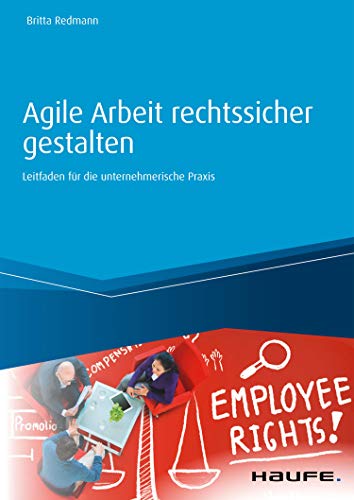Water lilies in change processes
Table of Contents
1. Change through labour law: a secure foothold for roots
2. Change through communication: radically changed language
3. Change through learning: coaching and new learning as root cultivation
4. Change through mediation: thinking from the root to the head – and into the heart
Radically changed – and fit for the future!
Nothing is like it was before. It feels like the world of work has changed radically in recent years. In its roots, in its foundations. The changes are perhaps best understood with examples from nature – it creates the greatest miracles and can be just as radically destructive.
With his water lily model¹, Edgar Schein used such an example from nature to vividly – almost naturally – describe the shape of organisational culture:
| Structure | The blossom and leaves of the water lily floating on the lake represent the top level. This means the structures that are visible from the outside, such as the strategy of the company, the organisation, the existing or produced resources and the technology. |
| Human | The flower alone is beautiful, but without the rest it is not able to survive. Finally, there is also a part of the water lily that is below the surface of the water. At this point, the stem of the water lily joins in, illustrating the flexible connection of the human being with the organisation and its values and norms. |
| Culture | The lowest level and the root system of the water lily are invisible but strong. This is where the implicit basic assumptions of the corporate culture are found – the anchor, the basis. |
| Environment | Not to forget the environment in which the water lily grows and lives. Water level and water quality, but also season or hours of sunshine represent challenges and opportunities that have an impact on the business. |
If I want the water lilies in the pond to bloom on the right side of the pond instead of the left, I can simply pull their heads from left to right. This is tedious and exhausting, but if I pull long and hard, eventually all the water lilies will be on the other bank. But only for a short time and only on the surface. Because what happens after a little while – and despite all my efforts? Exactly! The water lilies slowly and persistently move back to the left, original bank. Even though I have pulled on their heads – their roots are still deeply entrenched on the left bank. Without touching the root, I can pull on the heads as long as I want – nothing will change.
So if the last few years and, as their “crowning glory”, Corona have now radically changed our working world – then, with a lot of luck, we have transplanted water lilies or bred new water lily species. This new breeding now carries old and new genes. This is true for all employees of an organisation – for employees as well as employers! That is the crucial thing about culture change: that it affects the whole organisation from the root. The sheer duration of the pandemic has ensured that the change has been radical.
But time alone will not ensure that we establish internal, sustainable systemic change from this change through externalities. Now comes the anchoring phase. We have uprooted – but where we put down new roots – that is precisely the no less difficult challenge from now on!
So what companies have to tackle now, if they don’t want to struggle and toil hard and in vain every day anew, is to give new support to the deeper roots.
What are the possibilities here? How do we cultivate this new organisational culture with the existing tools, instruments and possibilities?
1. Change through labour law: a secure foothold for roots
For change to succeed, it is about linking the “agile idea” with legal security and conformity. So if companies decide to work in an agile way, this means paying into a culture of trust. Precisely so that this trust can develop and remain in the long term, certain legal aspects must be taken into account. Legal reliability creates trust. From the point of view of organisational psychology, labour law, just like a stable leadership and corporate culture, is thus one of the “guard rails of a change process”.
Within these guard rails – our lakeshore – new work can create a reliable and stable scope of action in which situational work is possible. Companies and also employees need room for manoeuvre in which they can try out cooperation. It makes sense to have a legal framework that allows this room for manoeuvre within the company. Here, for example, collective bargaining parties could also take on an important regulating function. Collective agreements offer a legally secure and thus trustworthy basis, which at the same time allow New Work-compatible freedom and optimise the speed of reaction that is so important for companies. Examples of this are the collective agreements of the metal and electrical industry, the chemical industry or Deutsche Bahn on mobile work or on models such as the “right to choose time instead of money”.
At the same time, collective labour law is “creatively compatible” enough to allow for variations within the organisation. It even makes them possible better than a completely lawless space!
As paradoxical as it may sound: the more flexibility is desired, the more commitment is needed between the parties involved. Otherwise it can easily happen that hybrid working models degenerate into chaos and frustration instead of making it easier for the participants to work together and, of course, having a positive effect on the company’s success in the end.
Hybrid models are complex and for this reason alone require clear orientation. How does this work? By having a predefined framework in which the conditions and rules for hybrid working are clearly defined. This framework is the “guiding star” for every company. It depicts the benefits and goals that are to be achieved with hybrid working and it serves to ensure that everyone can always align themselves with it – especially in cases of doubt.
Possible contents of such a framework could be which tasks are suitable for hybrid working at all and to what extent. It needs to be clarified how much binding planning is necessary so that as little administrative work as possible is involved. Also important: who decides? Are the rules set from “above” or how much say do the teams or even the individuals have?
If work is to be hybrid and thus partly mobile or completely remote, this requires a legal basis. The contracts should correspond to the respective framework regulations for hybrid work in the company. Either in the employment contract or, if there is a works council, e.g. through a company agreement.
2. Change through communication: radically changed language
When we are on the move – on journeys, in museums and concerts, when we observe people or their architecture or language: then we experience culture. As our own horizons expand, our understanding of culture changes at the same time. Perhaps only marginally, but it is always in motion.
Corporate culture moves in the same way. With each new employee, with the move to a new office, even with the “move out” to the home office, our corporate culture changes. Something new is always added. And – this is extremely important to keep in mind! – Nothing ever falls away. Culture has an unlimited memory. That’s why someone always remembers that things would have been done differently. That a process has always been like this. That it wouldn’t have existed in the past.
And for this we now need a new way of communicating – with the arrival of the new culture or the cultural change, our language has gained new words and at the same time has also blocked communication channels. We cannot NOT communicate – how right Paul Watzlawick is with this axiom that is now over 50 years old. Only now we have to do it differently – no longer in the hallway, in the kitchenette, on the way to the car park, but consciously planned – in break-out sessions, in walk and talks, in informal digital after-work meetings.
Communication becomes less random – which may take away some of the lightness, but makes it even more valuable!
There are new water lilies growing right next to me – but I can’t talk to them directly. Only when everyone has got used to a new environment – to a new water quality – is the flow of communication back in balance.
3. Change through learning: coaching and new learning as root cultivation
We continue to grow – our breeding ground has even become much better, more nutritious! This has an immense impact on human resource development and lifelong learning. In many cases, human resource development is still thought of too strongly from the (old) organisation and what could be useful here.
But what if we really put people at the centre? Learning is little different from any other HR task: There is no blueprint. We don’t pull on heads to make them smarter. Rather, the future task of HR coaches is to be learning creators. At the same time, HR development has to match organisational development, because companies are increasingly concerned with shaping workplaces, creating incentives, enabling participation and designing conducive cooperation.
Modern human resource development should create individual learning accounts for each employee, consisting of time and money. Similar to collective bargaining, where parties can opt for more money or more time off depending on their “taste” and personal setting, in the future it will then mean that employees can opt for more “paid” training or for time for informal learning. Learning is a highly intrinsically motivated process. HR must support it with the greatest possible flexibility. Systematic HR development should avoid one thing: forcing informal learning into a (familiar) corset. The very meaning of the word does not fit this at all.
How do you measure success? In the satisfaction of the employees, in the new ideas they bring to the team and the organisation, in the stories they tell about their new insights. There have to be common learning places for this. Our new lily pond with shady and sunny spots can be such an inspiring and individual learning environment. Where better to be in balance and in “flow” than in an element of nature than in water?
4. Change through mediation: thinking from the root to the head – and into the heart
We have pulled on heads and moved roots. We have pulled together – out of necessity. And yet we know that conflict is completely normal in companies. Whether we are talking about traditional companies or modern agile companies, it doesn’t really matter. Because where people work together, new conflicts arise every day.
It is not uncommon for culture change projects to fizzle out after initial momentum. What remains are unfulfilled expectations, disappointment, doubts as to whether further change projects will be more serious than the last one that just failed, and inner resistance to future change projects of any kind.
These conflicts can certainly sometimes be resolved legally – using our guardrails of labour law. We can communicate even more and develop personnel – but such approaches to solutions can also often lead to escalation, because certain parts of the complex reality actually always fade out legal solutions. For example, emotions or inner attitudes. Here it can make more sense to resort to the methods of mediation.
Internal conflicts have many causes; they often result from the perceived or also the actual stress of the people at your workplace. Pressure to perform, excessive demands or malfunctioning work processes play a role time and again. Sometimes, however, employees also feel they are being taken advantage of; they often cannot understand the decisions of managers.
A successful company always needs forward-looking, constructive cooperation. A culture in which employees support each other and their cooperation is reliable and powerful. That is what makes nature work – because all living beings exist in a natural relationship to each other. This is far from “peace, joy, pancakes”. It is hard work, sometimes the law of the strongest applies. But it must not threaten the existence of an entire species.
Mediation is an excellent method to get such conflicts under control and to find solutions that can be supported by both or all sides. The special thing about mediation is that the parties to the conflict work out a joint solution, i.e. they are not given a solution from outside.
Radically changed – and fit for the future!
Water lily flowers may only bloom for up to 7 days – but the plant is perennial, tough and persistent. Delicate and beautiful on the surface, robust and down-to-earth below the water level. Good qualities for a lasting change!
Water lilies, by the way, are also a great example of exponential growth. Exponential growth processes like those of water lilies have the property of constant doubling time. And this can also have a significant impact on change processes… but that’s a new topic.
It remains exciting – we should be ready for big changes and we may take an active role.
Each of us can flourish and grow!
Sources (in German):
Huck, Steffen: Von Seerosen, dem Coronavirus und guten Entscheidungen
initio Organisationsberatung: Die wichtigsten Modelle zur Analyse und Veränderung der Unternehmenskultur im Überblick
Redmann, Britta: Kreativer Spielraum im Arbeitsrecht
Notes:
[1] Seerosenmodell bzw. Kulturebenen-Modell von Edgar Schein
Here you will find a change log template for documenting changes to new software versions.
Britta Redmann has published various books in German, most recently “Agile Arbeit rechtssicher gestalten”. Here you can find an overview.
Britta Redmann has published more articles in the t2informatik Blog:

Britta Redmann
Britta Redmann is an independent lawyer, mediator and coach and is responsible for HR & Corporate Development at a software manufacturer. She is the author of various specialist books. As a human resources manager, she has accompanied, managed and implemented organisational developments in various industries. Her special expertise lies in the development of organizations up to agile and networked forms of cooperation. She transforms and implements modern concepts such as agility, work 4.0 and digitalisation in terms of labour law.



